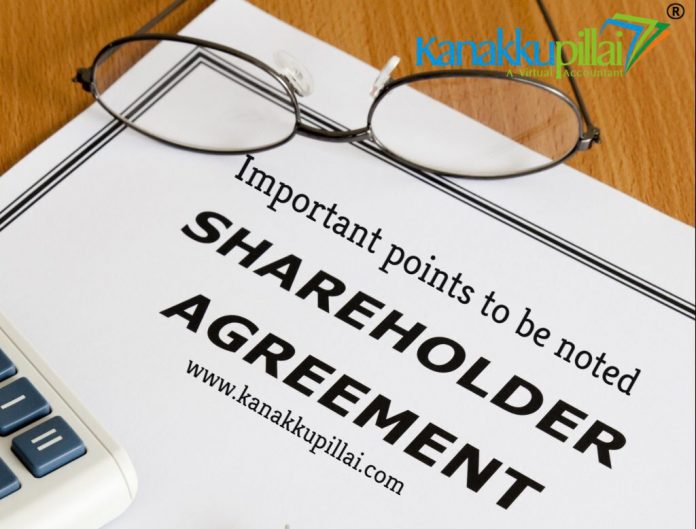This article has been written by Simran Jeet, pursuing a Diploma in Advanced Contract Drafting, Negotiation, and Dispute Resolution from LawSikho.
Table of Contents
Introduction
Capitalization table is a spreadsheet table that shows the equity shares of the company. It is mostly used by start-ups and early staged businesses but all companies can use it. In this article, we will further understand the capitalization table, its uses, and how it should be prepared. The aim of the article is to convey how a capitalization table can make it easier for the company to track down the ownership of the share and will make it easier for them to make any financial decisions.
What is a capitalization table?
It is an intricate breakdown of a company’s shareholders’ equity and represents the ownership capital in the company’s equity such as common equity shares, preferred equity shares, warrants, and convertible equity. It is also known as the cap table. The capitalization table is important in taking and understanding the financial decisions of the company and it helps the companies in understanding their market value. The capitalization table is mostly used by private companies because they need to provide information on their investors and the market value of the company.
Below is one example of a capitalization table:-
The capitalization table shows the total market value of the company and its components and it is required in every financial decision when that decision has an impact on market capitalization and the company’s market value. Therefore, it should be regularly maintained and updated. The information provided in it has to be very accurate so that it can meet the present needs of the business.
Key terms in capitalization table
It is very important for every investor to understand some of the key terms which have been used in the capitalization table and these three key terms are valuations, security types, and share counts.
Valuations
- Pre-money valuation – This valuation is placed on the company prior to an investment made in the company. The negotiation of this valuation usually takes place between the investors and the company management.
- Post–money valuation – This valuation comes into effect after an investment is made in the company and the total of both becomes the post-money valuation of the company.
For example – If the pre-money valuation is 10,00,00 Rs. and the investor makes the investment of Rs. One Lac, then the post-money valuation is 11 Lacs and it is showing as Liquid cash in the company’s balance sheet.
- Price-per-share – This comes into effect after the post-money stage and for calculating this, you need to take the post-money valuation and should be divided by the fully diluted shares.
Security types
- Common stock – The most basic form of equity ownership in the company is known as common stock. Shares of common stock represent the partial ownership of the company and it represents that each shareholder has certain profit rights in the company and the right to vote in the corporate affairs of the company.
- Preferred stock – These are special classes of shares with certain privileges and rights as defined in the charter of the company. In the situation of liquidation of the company, it is a default practice that preferred stock is paid before the common stock of the company.
- Convertible preferred stock – These classes of stocks have the option to convert into common stock and be paid at the same time at the rate of common stock. But, this can only be done under special circumstances especially at the discretion of the holder.
- Participating preferred – Under this type, the preferred stock has the right to be paid multiple of the original price and after that can also get converted into common stock. After converting into common stock, they can participate in the procedure of distribution to common like the way they would have done in the first place.
- Non-participating preferred – Under this type of preferred stock the investor has the right to be paid multiple of the original price of the stock or to get converted into the common stock and to be available for the distribution to common. It is for the investor to decide which liquidity method will bring great financial returns. It can also be termed as preferred stock but calling them non-participating clears all the doubts regarding the type of this stock.
- Stock options – A stock option is a contractual right to purchase a specified number of shares at a specified price at a specified future date or dates. Stock options are typically issued under the terms of a stock-option plan in which a pre-approved pool of shares has been set aside only for options and for restricted stock grants.
- Warrants – Warrants have the same kind of options available to them in which a specified number of shares at a specified price on a specified future date or dates can be purchased. but, no stock of spares and no options have been set aside under warrants. Warrants are only used during business transactions where employees need to be compensated.
- Restricted stock – There is widespread usage of restricted stocks because of its tax efficiency and restricted stocks are granted up-front, but that up-front ownership is subjected to some restrictions. Under the options, you do not have the ownership rights until vesting occurs, and then only you can exercise options. Under restricted stocks the restrictions over the ownership lapse with time and with options the ownership vests over time. But, the biggest benefit is the tax that we are getting under the restricted stock that after paying a small amount upfront you can access the benefits of lower capital gains on any future profits.
Share counts
- Authorized shares – All shares in the company must be duly authorized before they are issued. Authorized shares refer to those shares which have been duly authorized by the company’s board of directors for present or future references.
- Outstanding shares – This is the total number of shares that actually have been issued and this does not include options that have not been granted. It does not even include options that have not been exercised. All the shares are issued after all the options have been exercised.
- Fully diluted shares – This is a total number of Shares that counts all granted options, restricted stock warrants, and issued shares. It also counts if any outstanding or contingencies are left.
 Creating and maintaining a capitalization table
Creating and maintaining a capitalization table
The capitalization table can also be viewed as the balance sheet of the company which reflects the equity portion and also deals with the capital structuring of the firm.
The capitalization table represents the total equity shares of the investors in the company and it has been calculated by multiplying the total shares owned by the price of the shares. In most cases, the name of the security owners will be listed on the Y-axis and the security owners will be listed on the X-axis. The listing of investors can be done in different ways which also depends on the audience which has been targeted. The target audience is one of the key factors of any business because the success of any business and its growth depends on the audience that they are targeting and how that audience is responding to the products which have been offered to them. Some capitalization tables may list investors first followed by founders, further followed by executives and key employees with equity shares, then other investors such as angel investors, venture capital firms, and those who are involved in business plans. Then there are other capitalization tables that may want to present investors in descending orders by placing the top holders of the company on the top of the list. With time companies have been evolving and so their capitalization table has been updated with time. Start-ups issue stock options to attract talent and they also run several funding rounds in order to support the capital needs. All these actions change the capitalization table and therefore the table needs to be updated with time and should present the exact picture as per the requirement of the present time.
Capitalization table in the shareholders’ agreement
The layout and design of the cap table in the shareholder’s agreement are very simple and organized. It represents who owns the particular number of shares and the total number of shares that are still outstanding. A very common structure in practice is to represent the name of investors and owners on the Y-axis and the type of securities that will be listed on the X-axis. It can also be created in the form of a spreadsheet that reflects the two sections i.e. the valuation and ownership of the company. After the additional round of funding the cap table required an update. For example, issuing new shares of existing security, increasing and decreasing stock options for employees, and transfer of shares need to be updated. An updated cap table in the shareholder’s agreement helps the environmentalist and venture capitalists to make informed decisions. Any change in stock ownership also needs to be reflected.
Conclusion
The capitalization table is an important structure of any business setup because it not only represents the total number of shares owned by the investors, but it also represents the financial structuring of the company and what is the total valuation of that company. So, in other words, capitalization tables can give a clear idea of how a company is financially structured, what kind of talent that they possess, and how they go about the total number of the equities that they own.
References
- https://seraf-investor.com/compass/article/who-owns-what-understanding-early-stage-capitalization-tables-part-i
- https://www.cooleygo.com/what-is-a-cap-table/
- https://www.investopedia.com/terms/c/capitalization-table.asp#:~:text=The%20capitalization%20table%20shows%20each,securities%20on%20the%20X%2d Axis.
Students of Lawsikho courses regularly produce writing assignments and work on practical exercises as a part of their coursework and develop themselves in real-life practical skills.
LawSikho has created a telegram group for exchanging legal knowledge, referrals, and various opportunities. You can click on this link and join:











